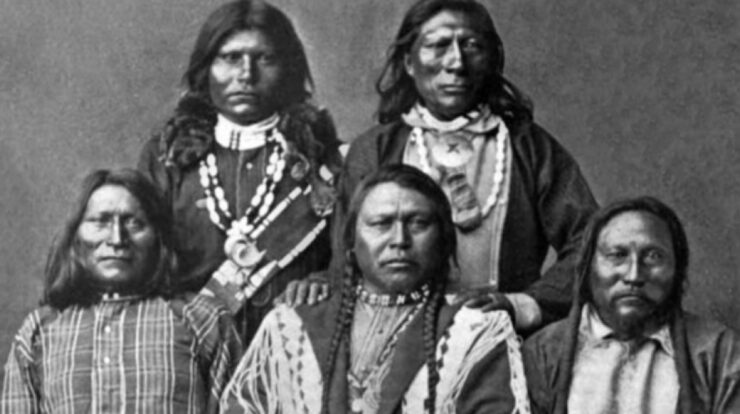
Let’s look at the history and culture of the Shoshone tribe featured in the Netflix series American Primeval. Learn how they lived, survived, and “thrive” today.
The Shoshone, also spelled Shoshoni, are a Native American tribe with deep roots across the western United States. Historically, they occupied vast territories spanning what is now Wyoming, Idaho, Nevada, Utah, and parts of California. The name “Shoshone” is believed to derive from their own word “Sosoni,” which referred to a type of high-growing grass, earning them the name “Grass House People” from some early observers.
Who Were the Shoshone?
The Shoshone are part of the larger Numic-speaking peoples, a branch of the Uto-Aztecan language family. Their culture and way of life varied greatly depending on where they lived, and over time, they divided into three main groups based on geography:
- Western Shoshone: Lived in present-day Nevada and parts of Utah and Idaho.
- Northern Shoshone: Inhabited southern Idaho and parts of Wyoming and northern Utah.
- Eastern Shoshone: Settled in the Rocky Mountain region of Wyoming.
How Did They Live?
The lifestyle of the Shoshone people was closely tied to their environment.
Western Shoshone were more nomadic and relied on hunting small game, gathering roots and seeds, and fishing in rivers and lakes.
Eastern Shoshone, due to proximity to the Great Plains, adopted horses earlier than many other tribes. This drastically changed their lifestyle, turning them into skilled bison hunters and horsemen, similar to the Plains tribes.
Horses, acquired in the 1700s, gave them increased mobility and power. The Eastern Shoshone became known for their horse culture and even had a reputation as formidable warriors.
Notable Figures
Perhaps the most well-known Shoshone figure in American history is Sacagawea, the young Shoshone woman who accompanied the Lewis and Clark Expedition (1804–1806). She acted as a guide and interpreter and remains a symbol of indigenous resilience and intelligence.
What Happened to the Shoshone?
Like many Native American tribes, the Shoshone faced displacement, broken treaties, and violence following European-American expansion. In the 19th century, they were pushed from their traditional lands through warfare and forced treaties. Several tragic events, including the Bear River Massacre (1863)—one of the deadliest massacres of Native people in U.S. history—marked this period of suffering.
Over time, the U.S. government moved many Shoshone to reservations, such as the Wind River Reservation in Wyoming (shared with the Northern Arapaho), and various others in Idaho, Nevada, and Utah. Despite these hardships, Shoshone communities have persisted.
Shoshone Today
Today, the Shoshone people continue to preserve their cultural heritage, language, and traditions. Tribal governments operate in multiple states, and efforts are ongoing to revitalize their native language and pass down traditional knowledge to younger generations.
They remain active voices in environmental stewardship, sovereignty rights, and cultural revitalization.





